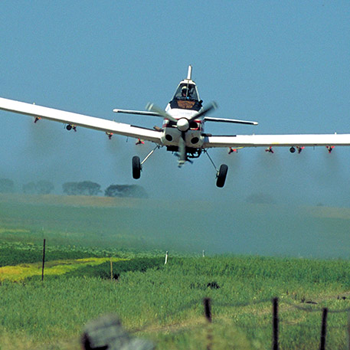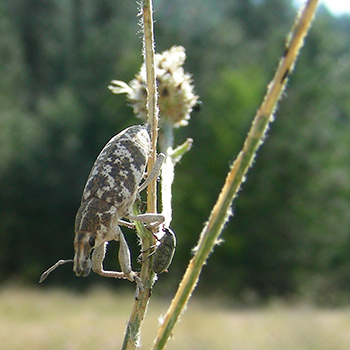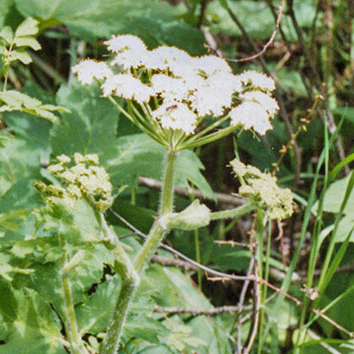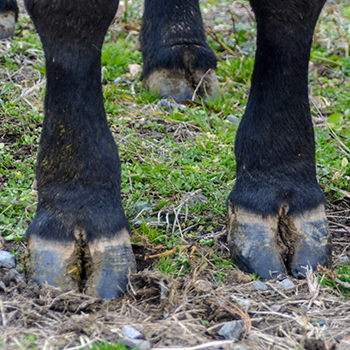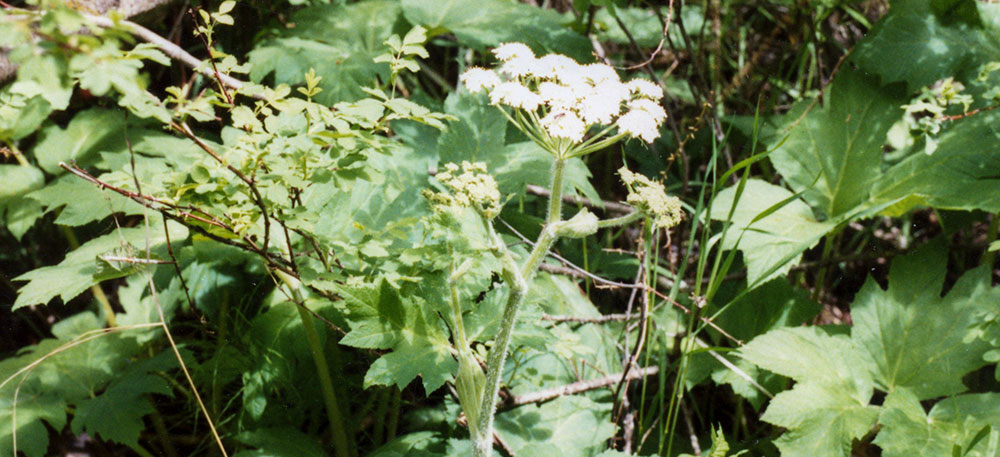
Weed Control in Cattle Pastures
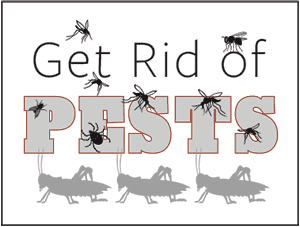
Holistic approach works best to keep weeds at bay.
Weeds can crowd out desirable forage plants. Don Morishita, retired University of Idaho professor of weed science and Extension specialist, says some weeds are a problem in dry rangeland, while others thrive in wet areas — such as irrigated pastures.
“If you allow irrigation water to stay too long in one area, weeds like annual foxtail can become established because they tolerate saturated ground better than the desirable pasture grasses do,” he says.
Once established, foxtail is difficult to control. You can’t selectively control it with herbicides without injuring or killing other grasses. Foxtail is best controlled with management practices like avoidance of overwatering.
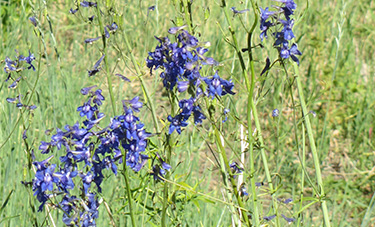 |
“You might spot spray a few patches of thistles, larkspur, knapweed or other weeds as a way to keep small intrusions from spreading,” says Don Morishita. |
“Whenever you stress desirable plants with too much or too little water, this allows other species and invaders to take over. Manage irrigation water so you don’t end up with saturated soil in low-lying areas — and invaders like foxtail or ‘slough’ grasses,” he says.
In dry situations, common mullein, knapweed, black henbane and certain types of thistles may invade pastures. They tolerate dry conditions better than most forage species. Morishita advises stockmen to use an integrated approach by not thinking of herbicides as the only tool for weed control. In some pastures, timely grazing and/or mowing before plants go to seed can help control certain plants. Some weeds can be grazed in early growth stages when they are palatable.
“Mowing bull thistles, Scotch thistles and musk thistles is effective. If you can keep these biennials from going to seed for a couple years, this will eliminate them. It’s more difficult to control perennials like Canadian thistle,” he says.
Mowing before they bloom can minimize seed production and spread, but the plants will regrow.
Some stockmen spot-graze with sheep or goats to control invasive species cattle won’t eat, such as leafy spurge and knapweed. In rough terrain where you can’t mow or drive a vehicle with a spray rig, selective grazing with herded sheep or goats is helpful.
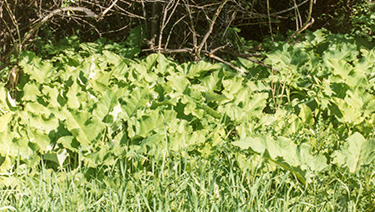 |
Pasture management and proper stocking is a key factor in weed control. Many invading weeds move in when primary plants are overstressed by drought or overgrazing. |
“You might spot spray a few patches of thistles, larkspur, knapweed or other weeds as a way to keep small intrusions from spreading,” says Morishita.
You can carry enough herbicide to kill small patches and keep them from moving into the rest of the pasture.
Consult your county weed specialist to learn as much as possible about the plant you are trying to control. Find the best management strategies to attack when it’s most vulnerable in its life cycle, like using certain herbicides or grazing/mowing. Control efforts used at the wrong time may be a waste of effort and money. If there are just a few plants, you may be able to dig them up. But do it early — before they go to seed — or your efforts may simply spread their seeds.
Pasture management and proper stocking is a key factor in weed control. Many invading weeds move in when primary plants are overstressed by drought or overgrazing. Good management can tip the balance in favor of desired species.
“One of the best analogies for fighting weeds was stated by Dr. Steve Dewey, a weed scientist at Utah State University (now retired). He suggested fighting weeds just like you fight fire. Often a forest fire or range fire starts from a small spot fire and if you can eliminate it, the problem is solved,” says Morishita.
Editor’s note: Heather Smith Thomas is a cattlewoman and freelance writer from Salmon, Idaho.
